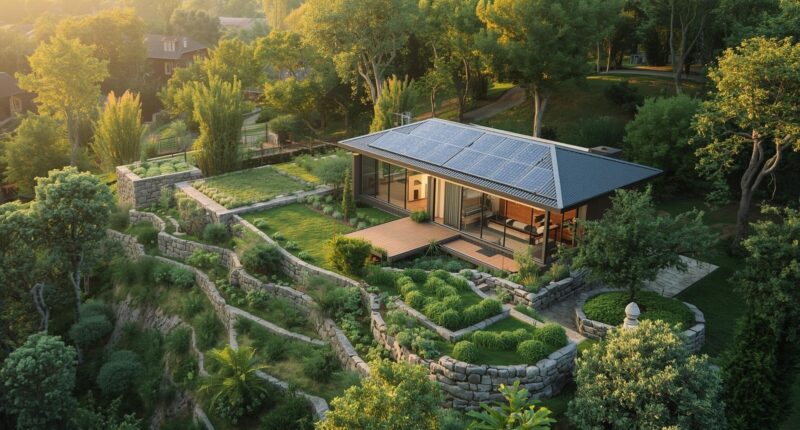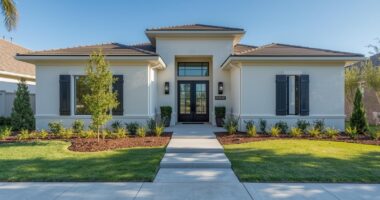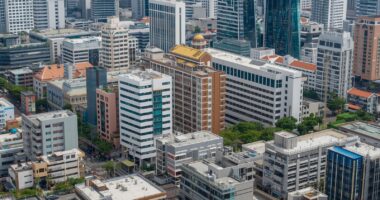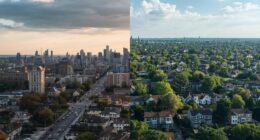Best Real Estate Options for a Sustainable Lifestyle
The Rise of Sustainable Living
The global shift toward sustainable living has transformed how people buy, build, and invest in real estate.
More homeowners are seeking eco-friendly homes, renewable energy systems, and communities that reduce environmental impact.
Choosing the right real estate options for a sustainable lifestyle isn’t just good for the planet — it’s smart for your wallet too.
Energy-efficient homes lower costs, increase property value, and promote healthier living.
This article explores the best eco-conscious real estate investments for a greener and more sustainable future.
Why Sustainability Matters in Real Estate
Sustainability isn’t just a trend — it’s becoming a global necessity.
From construction materials to community design, eco-friendly developments aim to reduce carbon footprints and conserve resources.
Benefits of Sustainable Real Estate
-
Lower energy costs: Through efficient heating, lighting, and insulation.
-
Healthier indoor environment: Less pollution and better air quality.
-
Higher resale value: Green-certified homes attract future buyers.
-
Government incentives: Tax benefits or rebates for energy-efficient properties.
Sustainable living combines comfort, cost savings, and environmental responsibility — a triple win for modern homeowners.
Table – Types of Sustainable Real Estate Options
| Property Type | Key Sustainable Features | Ideal For |
|---|---|---|
| Eco-Friendly Homes | Solar panels, efficient HVAC, recycled materials | Families & professionals |
| Green Apartments | Shared energy systems, rainwater harvesting | Urban dwellers |
| Tiny Homes | Minimal energy use, low construction waste | Minimalists & retirees |
| Sustainable Communities | Shared gardens, smart grids, renewable power | Families seeking community life |
| Off-Grid Homes | Solar + wind energy, water independence | Nature lovers & remote workers |
These options cater to different lifestyles while keeping sustainability at the core.
Step 1 – Choose Energy-Efficient Homes
Energy-efficient homes form the foundation of sustainable living.
They use advanced technologies to minimize waste and reduce utility bills.
Common Features
-
Smart thermostats and LED lighting
-
Solar panels or geothermal systems
-
Proper insulation and energy-rated windows
-
Low-flow faucets and water recycling systems
An energy-efficient home is both an environmental and financial investment that pays off long-term.
Learn more about eco-friendly living in our article — Sustainable Neighborhoods: Real Estate for Eco-Conscious Buyers.
Step 2 – Invest in Green Certified Buildings
Green certifications like LEED (Leadership in Energy and Environmental Design) or BREEAM signify that a property meets high sustainability standards.
Why Choose Certified Properties
-
Verified energy efficiency
-
Use of non-toxic, sustainable materials
-
Environmentally responsible construction
-
Access to tax benefits or higher resale value
These properties represent quality, credibility, and environmental responsibility.
Step 3 – Explore Sustainable Communities
Sustainable communities go beyond individual homes — they create shared eco-conscious ecosystems.
They’re designed to balance social connection and environmental awareness.
Community Features
-
Shared green spaces and community gardens
-
Renewable energy grids (solar or wind)
-
Recycling and composting facilities
-
Walkable layouts reducing car dependency
Living in such a community enhances both your environmental footprint and lifestyle quality.
Step 4 – Consider Tiny Homes or Modular Living
Tiny homes have emerged as a leading trend for minimalist and sustainable living.
They use fewer materials, consume less energy, and promote financial freedom.
Advantages of Tiny Homes
-
Affordable purchase and maintenance
-
Efficient space utilization
-
Smaller carbon footprint
-
Flexibility to relocate
Tiny homes prove that living smaller can mean living better.
Step 5 – Look Into Off-Grid Properties
Off-grid homes are designed for maximum self-sufficiency.
They operate independently from public utilities, making them ideal for sustainability enthusiasts.
Off-Grid Features
-
Solar, wind, or hydro-powered electricity
-
Rainwater harvesting and filtration
-
Organic food gardens and composting systems
-
Natural insulation materials like hempcrete or bamboo
These homes offer total energy independence and environmental harmony.
Learn more about global off-grid housing solutions from Green Building Advisor, a trusted resource for sustainable construction.
Step 6 – Evaluate Smart Homes for Eco-Efficiency
Technology can enhance sustainability through smart home integration.
These systems optimize energy use, automate appliances, and improve security.
Smart Features
-
Smart thermostats for efficient heating/cooling
-
Motion sensors for automatic lighting control
-
Smart irrigation for garden water conservation
-
Energy usage tracking apps
Smart homes are the future of sustainable real estate, blending innovation with environmental care.
Step 7 – Consider Sustainable Commercial Real Estate
Businesses are also joining the sustainability movement.
Green office spaces improve employee well-being and reduce operational costs.
Commercial Sustainability Features
-
Natural ventilation and lighting
-
Waste reduction systems
-
Energy-efficient infrastructure
-
Public transportation access
Investing in green commercial real estate can yield both financial and environmental returns.
Step 8 – Analyze Cost vs. Value
Some buyers hesitate to invest in green properties due to higher upfront costs.
However, these investments generate long-term savings through energy efficiency and low maintenance.
Example Comparison
| Property Type | Initial Cost | Annual Energy Savings | ROI Timeline |
|---|---|---|---|
| Traditional Home | Lower | Minimal | N/A |
| Eco-Home | Slightly higher | 30–50% energy savings | 5–7 years |
| Solar-Powered Home | Higher | 70%+ savings | 6–10 years |
Sustainability pays dividends — financially, socially, and environmentally.
Step 9 – Work with Eco-Friendly Developers
Choose developers who prioritize green design and ethical construction practices.
They ensure every stage — from planning to material sourcing — minimizes impact.
What to Look For
-
Experience with green-certified projects
-
Use of renewable or recycled materials
-
Transparent environmental impact reports
-
Commitment to long-term community growth
Partnering with sustainable developers ensures your investment is future-ready.
Step 10 – Think Global, Act Local
Sustainability doesn’t look the same everywhere.
Local climates, cultures, and resources affect how green housing is designed.
Regional Examples
-
Thailand: Eco-resorts and bamboo homes in tropical settings.
-
USA: Solar communities in Arizona and California.
-
Europe: Passive houses and energy-neutral apartments.
Adopting a local mindset while supporting global sustainability creates a balanced and responsible lifestyle.
Conclusion: Building the Future Sustainably
Sustainable real estate is not just about saving energy — it’s about building a better world.
The right property can offer comfort, efficiency, and connection to the environment while protecting your financial future.
By investing in eco-friendly homes, smart communities, and renewable technologies, you contribute to a greener planet and a higher quality of life.
The future of real estate is clear: green, innovative, and sustainable.
Start your journey today toward a lifestyle that’s good for you — and great for the planet.









